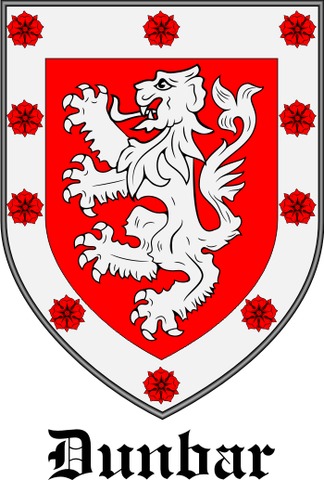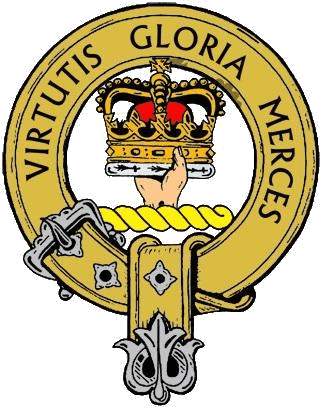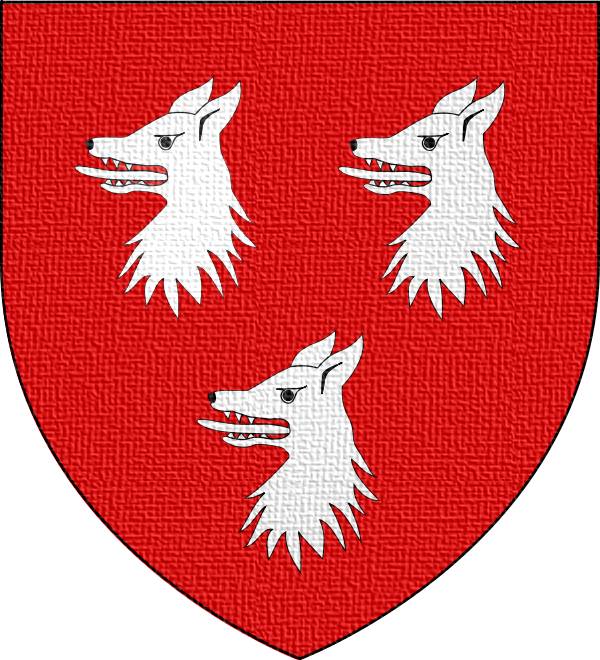Stewart / De Angus Ancestry
Sources:
- Book of Bruce: Ancestors and Descendants of King Robert of Scotland by Lyman Horace Weeks (1907)
- FamilySearch (https://familysearch.org/ark:/61903/2:1:MZ9B-7XC : accessed 30 October 2019), entry for Walter STEWART ;[HIGH STEWARD OF SCOTLAND] (GR3F-R4). And profiles thereof.
- Geni.com: Robert the Bruce (Master Profile) and reputable pages and sources thereof.
- Geni.com: Alan fitzFlaald, Sheriff of Shropshire and reputable pages thereof.
- Geni.com: Margaret Gospatrick of Dunbar and reputable pages thereof.
- History.com: "King Macbeth is killed by Malcolm Canmore"
- Geni.com: Henry le Scot, 3rd Earl of Huntingdon and reputable pages thereof.
- The Genealogy of the Most Noble and Ancient House of Drummond by the Honourable William Drummond
- The Archbishops of Dol and the origin of the Stewarts by Paul A. Fox from Foundation for Medieval Genealogy
- Genealogics: Adela of Normandy Comtesse d'Aumale
- English Monarchs - History of the Kings and Queens of England
- King, Edwin. Lionheart: Living in History, England 1190AD (1987).
- Britroyals: Royal Family Tree (849-present) - ancestral lines from my ancestor St. Margaret, Queen of Scots back to Alfred the Great
- Clan Donnachaidh - Origins
 Ancestry through parents Edward the Elder and Ecgwynn ↑ |
||||||||||||||||||||||||||||||||||||||||||||||||||||||||||||||||||
| Duncan of Strathearn, priest of Dule (Duncan Donnchadh, Priest Thane Dule and Earl of Caithness) b. ca. 890, Dule, Perthshire, Scotland d. ca. 925, Caithness, Scotland |
Research continuing at Geneanet and Geni.com and pages thereof. | Edmund (Eadmund) I "The Magnificent" King of the English b. ca. 923, Wessex, England d. 26 May 946, Pucklechurch, Dorset, England (Stabbed by robber). He married Saint Ælfgifu of Shaftesbury (St. Elgiva) b. ca. 924, Berkhamstead, Suffolk, England d. ca. 944, Shaftesbury Abbey, Shaftesbury, Dorset She was daughter of Wynflœd of Shaftesbury, daughter of Byrhtwynne |
||||||||||||||||||||||||||||||||||||||||||||||||||||||||||||||||
| | | ↓ |
| | ↓ |
| | ↓ |
 |
|||||||||||||||||||||||||||||||||||||||||||||||||||||||||||||||
| Duncan mac Donachadh, Abthane of Dule b. ca. 920, Dunkeld, Perthshire, Scotland d. 965, killed in the Battle of Duncrub1, 2 |
Kenneth II, King of Scots (Cináed II mac Maíl Coluim, Rí na h'Alba) b. 932, Iona, Argyllshire, Scotland Had his son by a woman of Leinster. d. 995, Fettercairne, Kincairdineshire, Scotland (Treachery) Buried at Iona, Argyllshire, Scotland |
Edgar (Eadgar) I "The Peaceful" King of the English b. 7 August 943, Wessex, England m. Elfrida (Ælfthryth) (ca. 945-1002), daughter of of Ordgar, Ealdorman of Devon and Wulfthryth of Devon d. 8 July 975, Winchester, Hampshire, England |
||||||||||||||||||||||||||||||||||||||||||||||||||||||||||||||||
| | | | | | | | | | | ↓ |
| | | | | | | | | | ↓ |
| | | | | | | | | | ↓ |
 |
Maldred |b. ca. 930, Northumberland, England d. | ↓ |
||||||||||||||||||||||||||||||||||||||||||||||||||||||||||||||
| Duncan mac Donnchad, Mormaer of Atholl b. ca. 949, Atholl, Perthshire, Scotland d. after 990, Luncarty, which became Perthshire, Scotland |
Malcolm II "The Destroyer", King of Scots (Máel Coluim Mac Cináeda, Rí na h'Alba) b. ca. 5 October 954, Dunkeld, Perth and Kinross, Scotland d. 25 November 1034, murdered at Glamis Castle, Glamis, Angus, Scotland Buried at St. Oran's Chapel Cemetery, The Reiling Ourain, Isle of Iona, Argyll and Bute, Scotland |
Æthelred "The Unready" (Ethelred II) b. ca. 966, Wessex, England m. Æfgifu of York (Elfgiva, Elfreda) d. 23 April 1016 |
Walroef (Siward) b. ca. 960, Northumberland, England d. |
m. 1008, Northumberland, England | Elfeda b. ca. 965, Northumberland, England d. |
Aldun, bishop b. 943, England d. |
||||||||||||||||||||||||||||||||||||||||||||||||||||||||||||
| | | | ↓ |
| | | ↓ |
| | | ↓ |
 |
| | | ↓ |
| | | ↓ |
|||||||||||||||||||||||||||||||||||||||||||||||||||||||||||||
| | | | ↓ |
| | | ↓ |
| | | ↓ |
| | | ↓ |
| | | ↓ |
| | | ↓ |
|||||||||||||||||||||||||||||||||||||||||||||||||||||||||||||
|
Clan Donnachaidh Origins
This clan is also known as |
Crínán mac Donnchad of Dunkeld (Abbot Crinan of Dunkeld) b. ca. 976, Atholl, Perthshire, Scotland d. 1045, killed in battle at Dunkeld (in rebellion against Macbeth), Perthshire, Scotland |
m. | Bethóc ingen Maíl Coluim meic Cináeda (Princess Bethoc of Scotland) b. 984, Atholl, Perthshire, Scotland d. ca. 1045, Atholl, Perth, Scotland |
Descendants through daughter Olith, Alice or Thora via her marriage to Sigurd II | Edmund II "Ironside" King of England b. 988, Wessex England m. Ealdgyth d. 30 November 1016, London, England |
Ughtred, Earl of Northumbria b. ca. 971, Northumbria, England d. 1016 |
m. ca. 991 | Eggfrida, Countess of Northumbria b. 973, Northumbria, England d. |
||||||||||||||||||||||||||||||||||||||||||||||||||||||||||
| | | | ↓ |
| | | ↓ |
 |
| | | ↓ |
|||||||||||||||||||||||||||||||||||||||||||||||||||||||||||||||
| King Duncan I "The Gracious" of Scotland (Donnchad mac Crínáin, Rí na h'Alba) b. 15 August 1001, Atholl, Perthshire, Scotland d. 14 August 1040, Pitgaveny, Elgin, Moray, Scotland, killed by King Macbeth in the Battle of Bothnagowan (Battle of Pitgaveny), near Elgin Buried at Isle of Iona, Scotland |
m. | Suthen Sibylla of Northumbria b. 1009, Northumbria, Northumberland, England d. 1070, Edinburgh Castle, Edinburgh, Mid Lothian, Scotland |
Edward "The Exile", ætheling of England b. 1016, Anglo-Saxon England m. Agatha d. 19 April 1057, London, England |
Bjorn Ulfiusson b. ca. 1017, Denmark d. 1045/9 |
Aldred of Bernicia b. ca. 994, Bernicia, Northumbria, England d. ca. 1039 |
|||||||||||||||||||||||||||||||||||||||||||||||||||||||||||||
| | | | | | | | | | ↓ |
| | | | | | | | | ↓ |
 |
| | | | | | | | | ↓ |
| | | | | | | | | ↓ |
|
|||||||||||||||||||||||||||||||||||||||||||||||||||||||||||||
| Hato, knight of Dol, flourished ca. 1013-1050. Hato was an archbishop's knight in the 1020s. and still living in 1050 according to Fox, p. 73. His name is Frankish and "is a warrior's name, being derived from hath, meaning war/combat" (Fox, p. 74). |
"It is evident that the barons of the north-eastern Breton march were very much inter-related, and that the Stewart ancestors, as stewards of the Archbishop of Dol, married into that group. Their earliest male line progenitor has been identified as Hato, a knight presumed to be of Frankish descent. He was probably brought into Brittany by Rivallon of Dol, the vidame of the Archbishop, to assist in the defence of the bishopric. His son Flaald became the first hereditary steward of Dol, and probably married Rivallon’s niece. Hato’s grandson Alan fitz Flaald, following his participation in the capture of Jerusalem in 1099, went on to become an English baron. ... The stewardship which they held was created by Archbishop Junkeneus of Dol (enthroned by 1008, died c.1039), a man whose wise counsels were much valued by Duke Alan III of Brittany, and whose family controlled the strategically important border lands with Normandy ... The Archbishop’s father Hamo was viscount of Alet..."
" (Fox, p. 61). Primary source for this part of the tree: Fox, p. 63. Hamo I, viscount of Alet Roianteline,
daughter of Rivallon m.
|
Malcolm Canmore (Great Head) was a savage, bestial man who reigned for thirty six years. In 1061 he burned Northumbria, and after the Norman Conquest his attacks, and William of England's harrying, turned the province into a wasteland. He attacked Cumbria with such unremitting ferocity that it was said there was no Scottish household without an English slave. Ironically, this brutal man was married to Margaret, a saintly English woman who did much to encourage cultural influence from the south. She was a beloved patron of the church.
|
Malcolm III, 'Canmore', King of Scots (Máel Coluim III mac Donnchada III) b. 26 March 1031, Dunkeld, Perthshire, Scotland d. 13 November 1093, slain in the Battle of Alnwick, near Alnwick Castle, Alnwick, Northumberland, England Buried at Dunfermline Abbey, Fife, Scotland Malcolm Canmore was last of the Celtic Kings (source: Today In Celtic History) |
m. | Saint Margaret, Queen of Scots b. 8 September 1045, Castle Reka, Mecseknádasd, Pecsváradi, Baranya, Hungary d. 16 November 1093, Edinburgh Castle, Edinburgh, Scotland Buried at Dunfermline Abbey, Dunfermline, Fifeshire, Scotland |
Notable Dates in Scottish History August 15: "Scotland's King Macbeth was killed by Malcolm Canmore at the Battle of Lumphanan on this day in 1057. Canmore's father, King Duncan I, was killed by Macbeth in 1040 in a battle near Elgin. After Duncan's death, Macbeth was crowned king of Scotland. In 1054, Siward, the Earl of Northumbria, acting on behalf of Malcolm, defeated Macbeth in the Battle of Dunsinane. That defeat resulted in Malcolm ruling the southern part of Scotland. For the next three years, Malcolm pursued Macbeth, who had fled north. With the help of the English, Malcolm defeated Macbeth at Lumphanan and was crowned King Malcolm III in 1058."(History.com: This Day in History) |
Siward Björnsson, Earl of Northumberland b. ca. 1025, Denmark d. 1055, York, Yorkshire, England Burial: Galmanho Abbey, York, Yorkshire, England |
m. ca. 1043, Northumberland, England | Aelfled (Elfleda) of Bernicia, Countess of Northumberland b. ca. 1027, Bernicia, Northumbria, England d. |
| | | | ↓ |
||||||||||||||||||||||||||||||||||||||||||||||||||||||||
| | | | | | ↓ |
|
| ↓ Inoguen Tehel/Teuharius
m.
↓
|
| | | | | ↓ |
 |
| | | | | ↓ |
| | | | | ↓ |
|||||||||||||||||||||||||||||||||||||||||||||||||||||||||||||
| Fledaldus or Flaald, Senescal of Dol b. Flourished in the 1050s. d. by 1076 |
m. | daughter of Inoguen and Tehel b. d. |
Ernulf de Hesdin b. ? Shropshire England d. |
m. | Emmeline de Normandy (alleged wife) b. d. |
↘ Looking for the Battle of Lille (Phalempin)? Go to the far top right. |
↘ Looking for the Battle of Lille (Phalempin)? Go to the far top right. |
 |
| | | | | | | | | | | | | | | | | | | | | | | ↓ |
Waltheof was the last Saxon earl of Northumberland and ancestors to the earls of Huntingdon. He bore coat of arms with argent, a lion rampant azure, chief gules (Weeks, p. 314). He was beheaded due to the Revolt of the Earls against William the Conqueror (his wife's uncle) according to Genealogics and cited sources: 1 and 2. | Waltheof, Earl of Northumbria b. about 1046, Northumberland, England d. 31 May 1076 Burial: June 1076, Crowland, Lincolnshire, England  Coat of Arms More about Waltheof. |
m. | Judith de Lens b. ca. 1054, Lens, Artois, Flemish region, Holy Roman Empire (now Nord-Pas-de-Calais, France) d. ca. 1086, Lens, Artois, France |
Ranulph "the Rich" b. in Normandy France d. 1047, Normandy, France |
||||||||||||||||||||||||||||||||||||||||||||||||||||
| | | | ↓ |
| | | ↓ |
| ? | ↓ |
| | | ↓ |
| | | ↓ |
| | | ↓ |
|||||||||||||||||||||||||||||||||||||||||||||||||||||||||||||
| "Alan fitz Flaald became a close friend of Henry, later King Henry I of England, during the period when Henry controlled Mont-Saint-Michel as Count of the Cotentin" in western Normandy (Fox, p. 71). | Alan FitzFlaald, Steward of Dol and Sheriff of Shropshire b. Dol-de-Bretagne, Brittany, France d. ca. 1114-1116 |
m. by 1103 Alan the steward left Brittany on the first crusade in 1096 (Forester, 1853, vol.3, p.99).33 It has usually been assumed that he did not return, and that the Alan fitz Flaald who was created a baron in England a few years later was his nephew, but a new look at the evidence leads to the conclusion that the English baron was the crusader (Fox, p. 71). |
Avelina de Hesdin b. ca. Shropshire, England d. |
Thomas de Londoniis b. 1100, Paisley Abbey, Renfrewshire, Scotland d. |
m. | b. d. |
Dufugan, Earl of Angus (Dufagan mac Indrechtaich, 1st Mórmaer of Angus) b. ca. 1090, Forfar, Angusshire, Scotland d. ca. 1118 |
m. | b. d. |
Of the three sons of Malcolm Canmore to sit on the throne of Scotland, David was the most heavily influenced by the Normans. He welcomed many Anglo-Normans to his court, giving them land and titles. Three of the most important of these friends of the king were Bernard de Balliol, whose father had served at Hastings; Robert de Brus, who David made Lord of Annandale; and Walter FitzAlan who David appointed hereditary High Steward of Scotland.
|
King David "The Saint" mac Maíl Coluim (mac Malcolm) I b. ca. 1083, Fordoun, Kincadineshire, Scotland d. 24 May 1153, Carlisle, Cumberland, England |
m. ca. 1113 (Weeks, p. 204) This was her second marriage (Weeks, p. 261). |
Matilda (Maud) Huntington, Queen Consort of Scotland b. about 1072, Huntington, Huntingdonshire, England d. 23 April 1130 / 1131, Scotland Burial: 1130 / 1131, Scone, Perthshire, England |
m. in or before 1090 This was her first marriage. He died returning from a pilgrimage to the Holy Land while staying at the Priory of La Charité-sur-Loire in Burgundy, France. |
Simon de Senlis, Earl of Huntingdon and Northampton b. ca. 1046, Capelle-les-Grands, Eure, Upper Normandy, France d. ca. 1111, La Charité-sur-Loire, Bourgogne, France. Burial: Priory of La Charité-sur-Loire in Burgundy, France Reinterred: St. Neots, Faches-Thumesnil, Nord-Pas de Calais, France |
|||||||||||||||||||||||||||||||||||||||||||||||||||
| | | | ↓ |
| | | ↓ |
| | | ↓ |
 |
| | | ↓ |
| | | ↓ |
|||||||||||||||||||||||||||||||||||||||||||||||||||||||||||||
| | | | ↓ |
| | | ↓ |
| | | ↓ |
| | | ↓ |
Descendants through daughter Matilda de Senlis via her marriage to Robert FitzRichard de Clare | ||||||||||||||||||||||||||||||||||||||||||||||||||||||||||||||
| | | | ↓ |
| | | ↓ |
| | | ↓ |
| | | ↓ |
To be researched on Geni.com ↓ |
||||||||||||||||||||||||||||||||||||||||||||||||||||||||||||||
| "... Walter was granted the Sussex manor of Stoke by his brother William, went into the service of the king of Scotland, and was ancestor of the Stewarts" (Fox, p. 73). | Walter FitzAlan b. about 1107, Paisley Abbey, Renfrewshire, Scotland d. 1177 |
m. ca. 1131 in Roxburghshire, Scotland | Eschyna/Eschina de Molle and Huntlaw b. ? Paisley Abbey, Renfrewshire, Scotland d. |
← Source for marriage location and his death year and her secondary spelling of name and addition of Huntlaw: Book of Bruce, p. 156, referencing Antiquities of Shropshire by R.W. Eyton, Vol. VII., p. 228. | Gillbride, Earl of Angus (Gille Brigte mac Dufugan, 2nd Earl of Angus) b. about 1118, Forfar, Angusshire, Scotland d. ca. 1187 |
m. | Margaret Gospatrick De Dunbar b. ca. 1115-1124, Dunbar Castle, East Lothian, Scotland, OR Northumberland, England d. Forfar, Angusshire, Scotland Place of Burial: England |

 Dunbar motto: In promptu "In readiness" |
Henry, Prince of Scotland b. ca. 1114/19, Scotland d. 12 June 1152 Burial: Kelso, Roxburghshire, Scotland Because he died before his father, he never mounted the throne (Weeks, p. 204). 
|
m. 1139 (Weeks, p. 204) |
Ada de Warenne, Countess of Huntingdon b. 1120, Huntingdon, Huntingdonshire, England d. 1178, Warwickshire, England |
|||||||||||||||||||||||||||||||||||||||||||||||||||||||
| | | | | | | | | | | | | | | | | | | ↓ |
| | | | | | | | | | | | | | | | | | ↓ |
| | | | | | | | | | | | | | | | | ↓ |
||||||||||||||||||||||||||||||||||||||||||||||||||||||||||||||||
| "Alan Fitz Alan, son of the preceding, succeeded his father in the important office of High Steward of Scotland. He was a man of notable character and emulated the zeal of his father in religious affairs, giving many munificent grants to church institutions" (Book of Bruce, p. 157). | Alan FitzWalter (Alan Fitz Alan*), High Steward of Scotland b. 1126, Paisley Abbey, Renfrewshire, Scotland d. 1204, "buried in the Abbey of Paisley" (Book of Bruce, p. 157). |
m. ca. 1175 | "He married, first, Eva, daughter of Suan, who was a son of Thor, Lord of Tippermuir and Tranant ; second, Alesta, daughter of Morgund, Earl of Mar" (Book of Bruce, p. 157). I am unsure which is the mother of the children below. | Gilchrist, Earl of Angus (Gille Críst mac Gille Brigte, 4th Earl of Angus) b. about 1154, Forfar, Angusshire, Scotland d. 1207 |
m. 1169 | Marjory (Margaret), Princess of Scotland b. 1152, England d. ca. 1213 |
||||||||||||||||||||||||||||||||||||||||||||||||||||||||||||
| | | | ↓ |
| | | ↓ |
|||||||||||||||||||||||||||||||||||||||||||||||||||||||||||||||||
| | | | ↓ |
| | | ↓ |
| | | ↓ |
 |
|||||||||||||||||||||||||||||||||||||||||||||||||||||||||||||||
| Descendants through daughter Avelina FitzWalter via her marriage to Duncan, Earl of Carrick | Descendants through son Walter Stewart, High Steward of Scotland, via his marriage to Beatrix De Angus |
<-- The marriage and descendants of Walter Stewart, High Steward of Scotland, and Beatrix De Angus--> ↓ |
Descendants through daughter Beatrix De Angus, via her marriage to Walter Stewart, High Steward of Scotland |
|||||||||||||||||||||||||||||||||||||||||||||||||||||||||||||||

 Clan Robertson
Clan Robertson